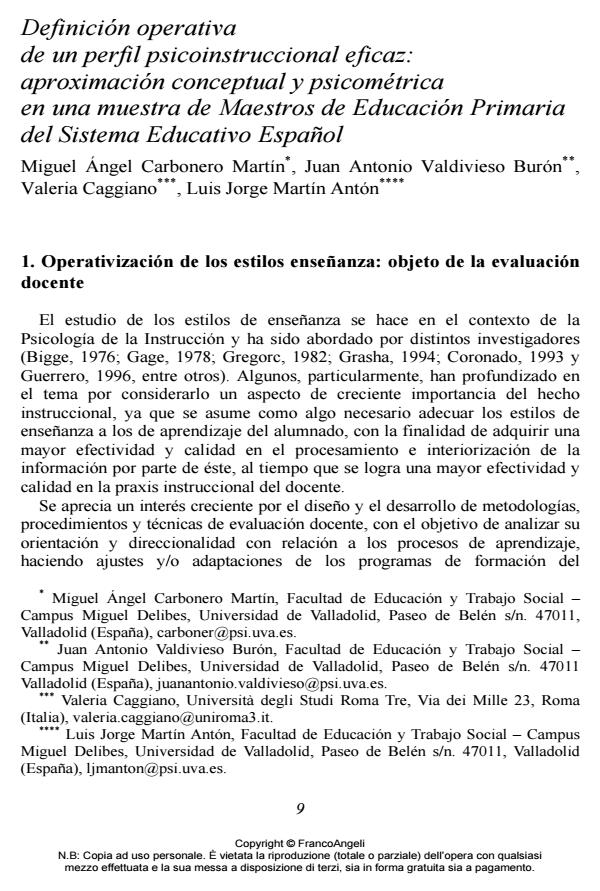Operational definition of an effective psychological and educational profile: Conceptual and psychometric approach in a sample of Elementary Teachers Spanish Educational System
Journal title CADMO
Author/s Angel Miguel Carbonero Martìn, Burón Juan Antonio Valdivieso, Valeria Caggiano, Antón Luis Jorge Martín
Publishing Year 2013 Issue 2013/1
Language Spanish Pages 14 P. 9-22 File size 449 KB
DOI 10.3280/CAD2013-001002
DOI is like a bar code for intellectual property: to have more infomation
click here
Below, you can see the article first page
If you want to buy this article in PDF format, you can do it, following the instructions to buy download credits

FrancoAngeli is member of Publishers International Linking Association, Inc (PILA), a not-for-profit association which run the CrossRef service enabling links to and from online scholarly content.
From the construction and validation of a rating scale of self-perceived Competence of the Primary School Teachers (ECAD-EP) is obtained the teacher profile assumed and developed by teachers of primary education belonging to the Spanish educational system that tries to answer operationalization of teaching styles that allow the teacher to discover those features that best demonstrate a high effectiveness. The structure of the scale validity presents a threedimensional factor in the following order: (a) Socio-emotional, composed of the variables: "Coexistence", "Mediation", "Revitalization group", "Emotional involvement", "Adapting communicative", "Communicative sensitivity", "Empathy" and "Self-efficacy"; (b) Communicative- relational, consisting of the variables: "Assertiveness", "Affective leadership", "Executive leadership", "Conflict resolution", "Nonverbal communication" and "Paraverbal communication"; © Instructional, which contains the variables: "Adapting to new situations", "Instructional control" and "Planning". Thus, the theoretical model of teaching as defined initially, has been appreciating elements and factors that form a multidimensional concept of meaning, including not only factual or behavioral variables, but also cognitive and metacognitive, social and emotional. Therefore, teaching is not only seen as a process of sequential linear or uniform but circular in nature with a constant interplay between a number of variables or dimensions and multiple hierarchies.
Keywords: Teaching styles, evaluation of teaching, self-perceived teaching competence, instructional variables, teacher rating scale.
Angel Miguel Carbonero Martìn, Burón Juan Antonio Valdivieso, Valeria Caggiano, Antón Luis Jorge Martín, Definición operativa de un perfil psicoinstruccional eficaz: aproximación conceptual y psicométrica en una muestra de Maestros de Educación Primaria del Sistema Educativo Espanol in "CADMO" 1/2013, pp 9-22, DOI: 10.3280/CAD2013-001002